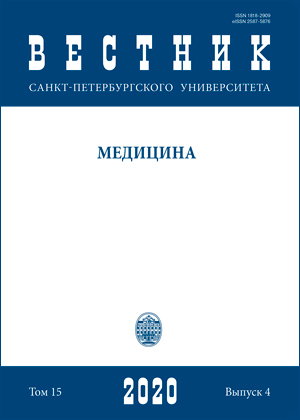Application of cellular and artificial membranes in nanomedicine
DOI:
https://doi.org/10.21638/spbu11.2020.407Аннотация
The use of nanoparticles in treatment and diagnostics of a number of disorders is becoming more and more popular. Further investigations are needed for improving the specificity of nanoparticle action, precisely targeted drug delivery, decreasing opsonization of nanoparticles by macrophages. Numerous ways of nanoparticle surface modification have been successfully tested for increasing their therapeutic potential and reducing possible side effects. Nanoparticle encapsulation using plasma membranes of red blood cells as well as other cell types has been recently introduced. This field of translational medicine substantially expands opportunities for nanoparticle application in clinical diagnostics and therapy of cancer, cardiovascular diseases, in vaccine development etc. This review focuses on ways, advantages and disadvantages of using cellular membranes in nanomedicine. Application of artificial lipid membranes
in nanoparticles encapsulation is proposed.
Ключевые слова:
nanoparticles, cell membranes, liposomes
Скачивания
Библиографические ссылки
References
Загрузки
Опубликован
Как цитировать
Выпуск
Раздел
Лицензия
Статьи журнала «Вестник Санкт-Петербургского университета. Медицина» находятся в открытом доступе и распространяются в соответствии с условиями Лицензионного Договора с Санкт-Петербургским государственным университетом, который бесплатно предоставляет авторам неограниченное распространение и самостоятельное архивирование.





